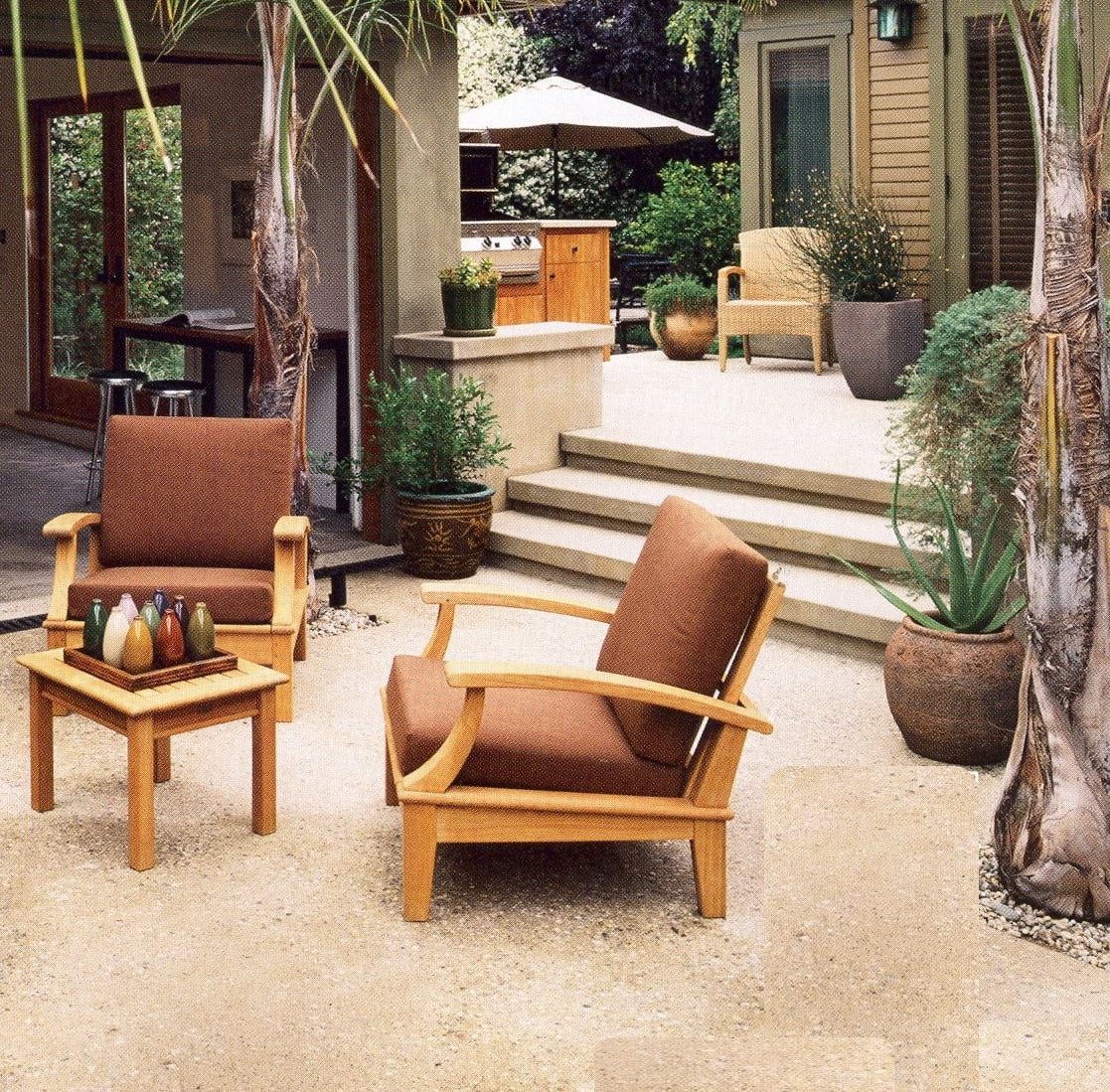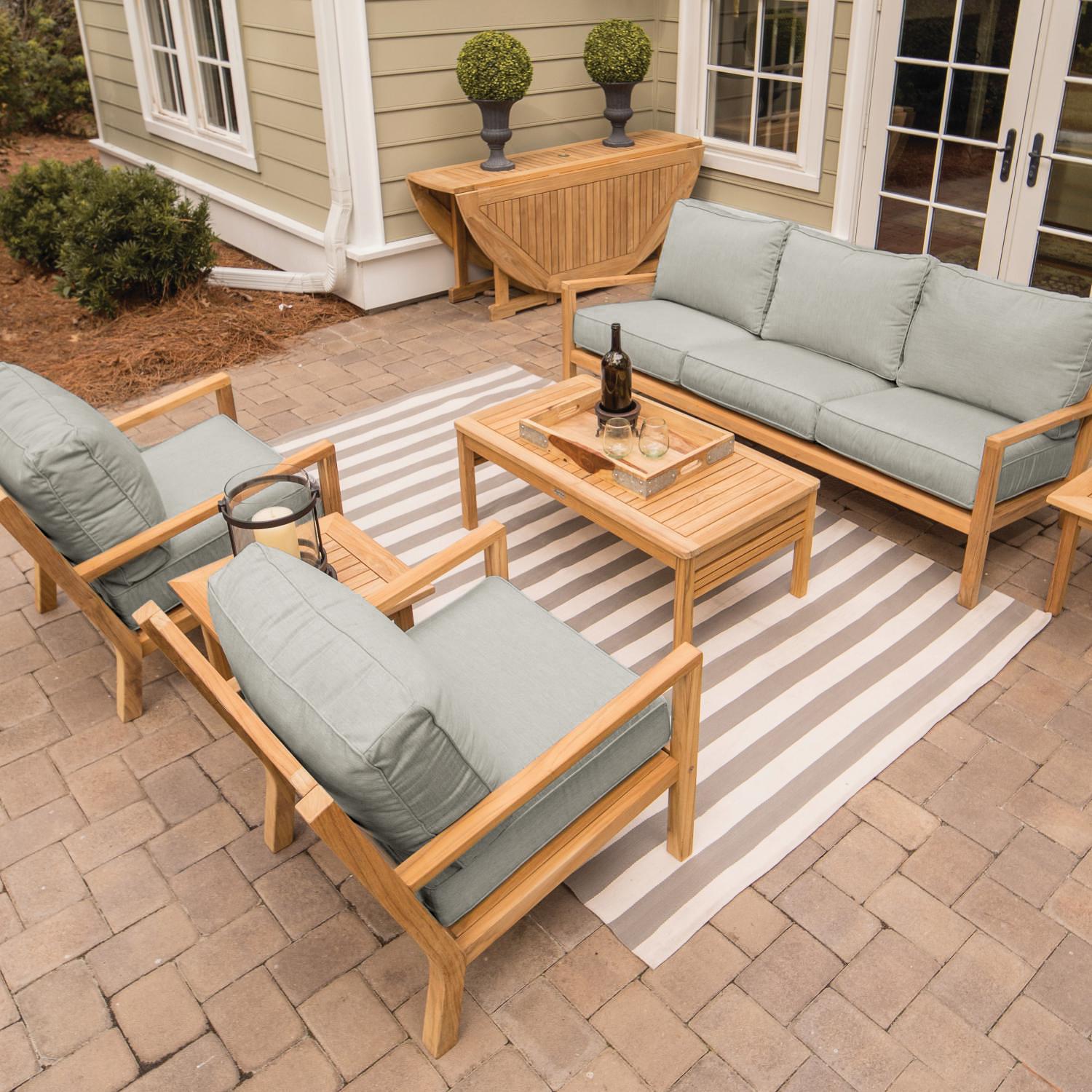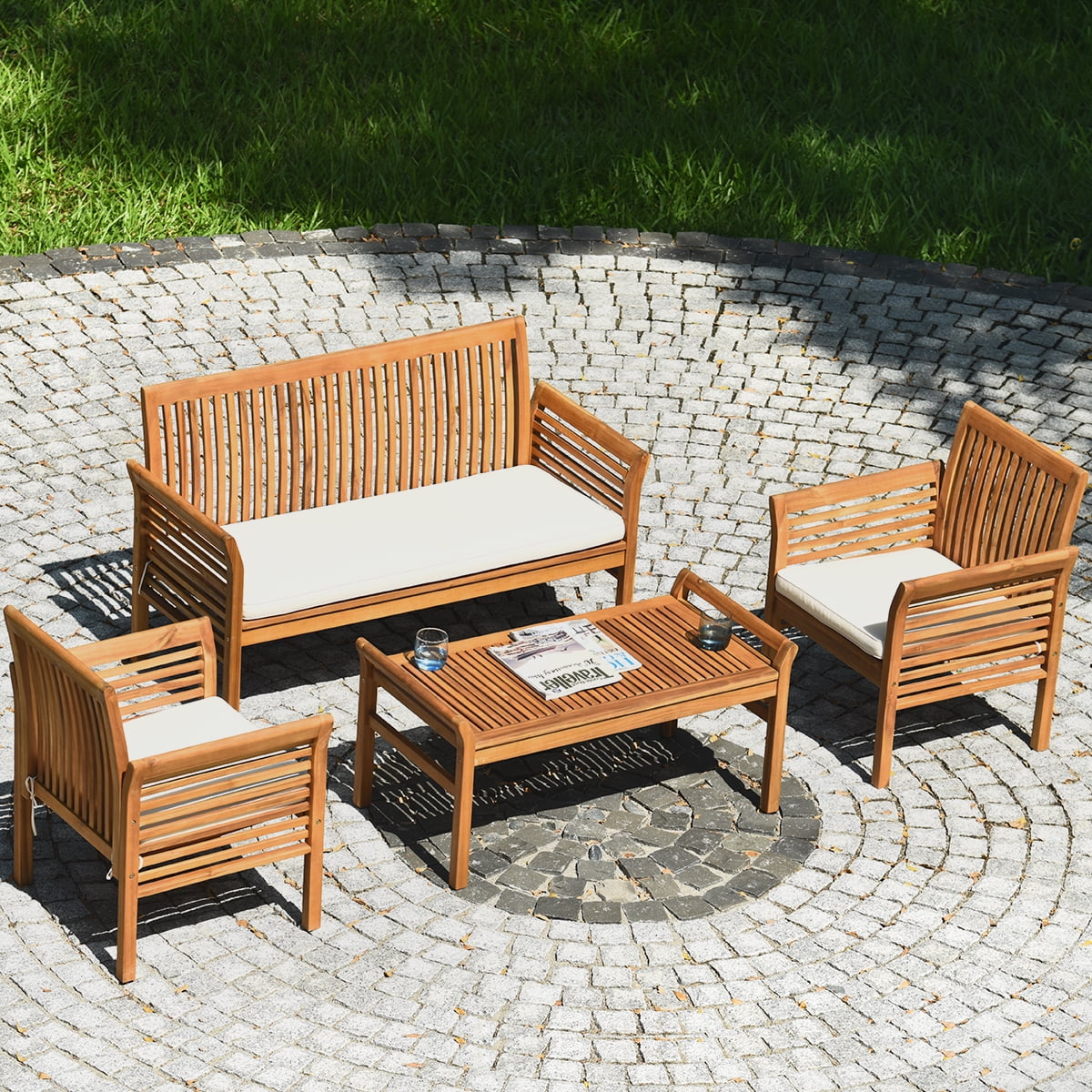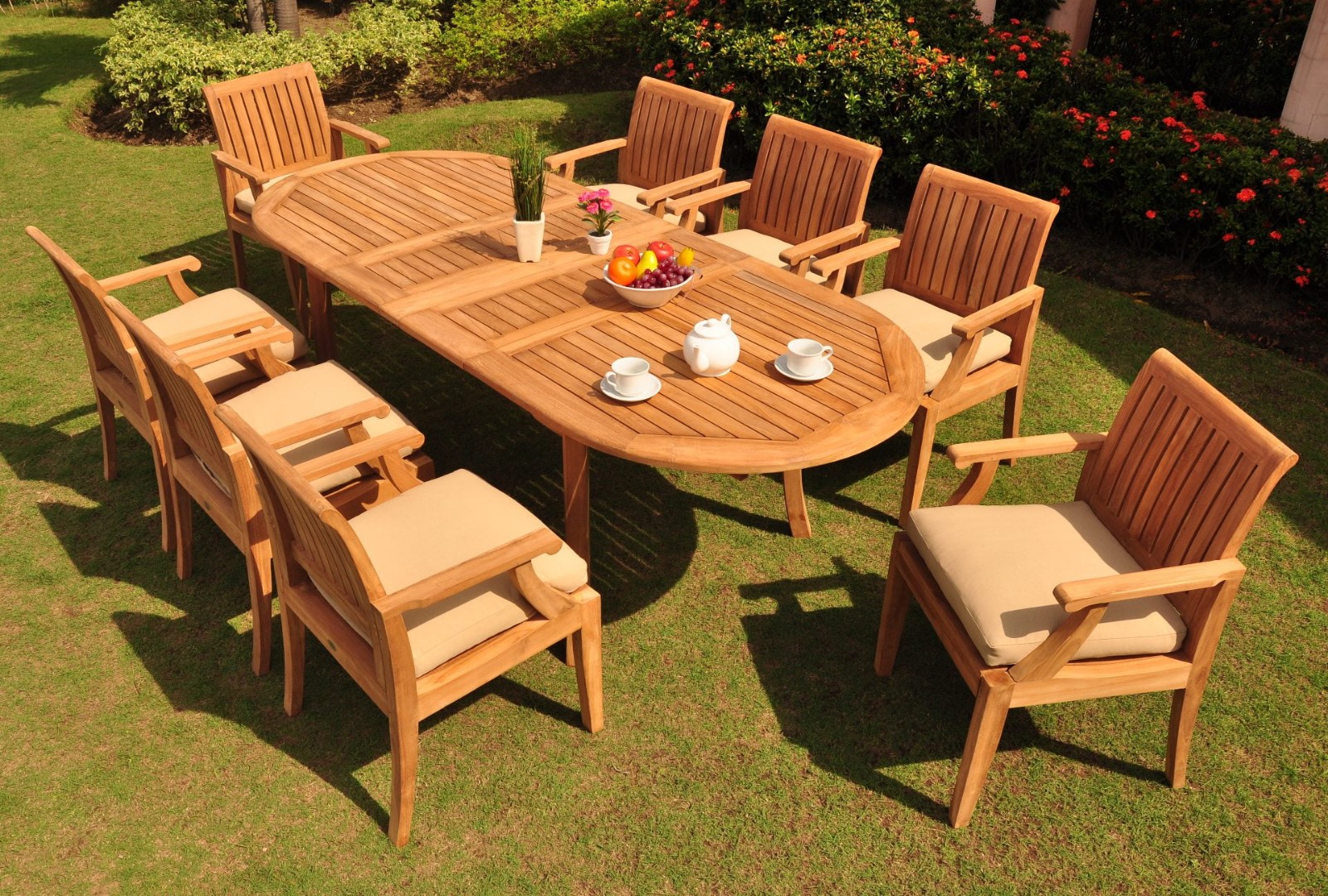In the outdoor furniture market, teak furniture is highly favored for its excellent weather resistance, beautiful wood grain and extremely high durability. However, there are also many fake teak furniture products on the market. How to accurately identify real teak furniture has become an important issue of concern to consumers.
This article will introduce in detail the methods of identifying outdoor teak furniture and analyze the differences between teak furniture and other wooden furniture.

What are the basic characteristics of teak?
Basic characteristics of teak: color (real teak color ranges from golden yellow to dark brown), wood grain (teak wood grain is fine and uniform, usually straight or slightly wavy), smell (real teak has a unique aromatic smell), weight (teak is a hardwood with a higher density and its wood weight is larger).
1. Wood color: The color of real teak ranges from golden yellow to dark brown. New teak is usually golden yellow, which gradually changes to dark brown over time and eventually forms a unique silver-gray patina. Fake teak furniture often has unnatural colors and lacks this gradual change process.
2. Wood grain characteristics: Teak wood grain is fine and uniform, usually straight or slightly wavy. Small black mineral lines are often seen in its wood grain, which is due to the absorption of minerals from the soil during the growth of teak. Fake outdoor teak furniture usually lacks this unique mineral line and the wood grain is not fine enough.
3. Wood smell: Real teak has a unique aromatic smell, which comes from the natural oils and gums in teak. It smells like a light fragrance, not a pungent chemical smell. Fake teak furniture often does not have this aroma, or is treated with chemicals, and the smell is more pungent.
4. Wood weight: Teak is a hardwood with a higher density, and its wood weight is heavier, giving people a heavy feeling. Fake teak outdoor furniture usually uses lighter wood, feels lighter, and is not solid enough.

How to tell if outdoor furniture is teak?
How to identify teak furniture:
1. Observe the color and wood grain (real teak furniture has natural color, fine and uniform wood grain, with fine black mineral lines)
2. Touch the texture (real teak furniture has a smooth surface, warm texture, and feels delicate to the touch)
3. Smell the smell (teak furniture has a light natural fragrance, not a pungent chemical smell)
4. Check the weight (teak furniture is heavier and feels heavy)
5. Check the origin (teak is mainly produced in Southeast Asian countries such as Myanmar, Thailand, Indonesia and Laos).
1. Observe the color and wood grain: First, carefully observe the color and wood grain of the furniture. Real teak outdoor furniture has natural color, fine and uniform wood grain, with fine black mineral lines. You can use a magnifying glass to carefully check the wood grain. Fake teak furniture has rough wood grain and lacks delicate texture.
2. Touch the texture: Touch the surface of the furniture with your hand to feel its texture. Real teak furniture has a smooth surface, warm texture, and feels delicate to the touch. The surface of fake teak furniture is relatively rough, the texture is not delicate enough, and it may feel scratchy.
3. Smell: Get close to the furniture and smell it. Real teak outdoor furniture has a light natural fragrance, not a pungent chemical smell. If you smell a clear smell of chemicals, it is likely to be fake teak furniture.
4. Check the weight: Move the furniture and feel its weight. Real outdoor teak furniture is heavier and feels heavy. Fake teak furniture is usually lighter and does not feel solid enough.
5. Check the origin: Teak is mainly produced in Southeast Asian countries such as Myanmar, Thailand, Indonesia and Laos. When purchasing, you can ask the merchant to provide relevant certificates of origin and material test reports to ensure that the furniture you buy is real teak furniture.

What is the difference between teak furniture and other wooden furniture?
The difference between teak furniture and other wooden furniture: weather resistance (extremely strong in waterproof, anti-corrosion and pest resistance), strength and hardness, wood grain and appearance, environmental protection and sustainability (teak has a long growth cycle and relatively scarce resources), price (teak furniture is relatively expensive and belongs to high-end furniture products).
1. Difference in weather resistance
● Teak furniture: Teak has extremely strong weather resistance and can maintain stable performance under various climatic conditions. Its natural oils and gums make it extremely waterproof, anti-corrosion and anti-pest, suitable for long-term outdoor use.
● Other wooden furniture: Most wooden furniture has weak weather resistance and is easily affected by climate change. In a humid environment, wooden furniture is prone to deformation, cracking and rotting, and requires frequent maintenance and care.
2. Difference in strength and hardness
● Teak furniture: Teak has extremely high strength and hardness, excellent bending resistance, compression resistance and tensile strength, can withstand large weight and pressure, and has a long service life.
● Other wooden furniture: The strength and hardness of different woods vary greatly. Generally speaking, hardwood furniture has higher strength and hardness, but still not as good as teak. Softwood furniture has lower strength and hardness and is easily damaged.
3. Differences in wood grain and appearance
● Teak furniture: Teak has fine and beautiful wood grain, ranging from golden yellow to dark brown, and forms a unique silver-gray patina over time. Its natural luster and warm texture make teak furniture highly decorative.
● Other wood furniture: The wood grain and appearance of different woods vary greatly. Hardwood furniture has finer wood grain and richer colors, but most woods do not have the natural luster and patina of teak. Softwood furniture has rougher wood grain and a relatively ordinary appearance.
4. Differences in environmental protection and sustainability
● Teak furniture: Teak has a long growth cycle and relatively scarce resources. Many regions that produce teak furniture implement sustainable management to ensure the rational use and protection of teak resources.
● Other wood furniture: Many hardwoods and corks have a short growth cycle and relatively abundant resources. In terms of environmental protection and sustainability, the management and utilization of some woods are better, but there are also problems of resource abuse and environmental damage.
5. Price difference
● Teak furniture: Due to its excellent characteristics and scarcity, outdoor teak furniture is more expensive and belongs to high-end furniture products.
● Other wood furniture: The price of different woods varies greatly. Hardwood furniture is more expensive, but usually lower than teak furniture. Softwood furniture is more affordable and suitable for mass consumption.


